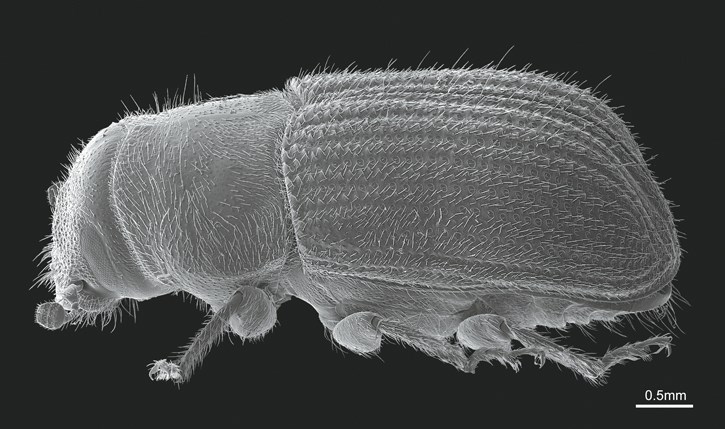CANMORE – While the cold snap earlier in January may have killed off up to 95 per cent of mountain pine beetles in northern Alberta, the bothersome bugs that call the Bow Valley home likely did not suffer the same fate.
Manager of public works for the Town of Canmore Andreas Comeau said locally the recent cold weather came on gradually, which was not the ideal conditions to decrease the population of the pine beetles.
“Ours [cold weather] was much more gradual, which allows the mountain pine beetle time to create the antifreeze that they need to protect their bodies from the deep cold”, Comeau explained, comparing Canmore's conditions to Jasper and Edmonton.
"We need significant cold temperatures for two weeks, or a sudden cold snap. Here, where we often have good luck is not so much the quick cold snap, but we can have two weeks of -30 C that has a significant impact on the population."
When mountain pine beetles are larvae they metabolize an antifreeze that can make them resistant to moderately cold temperatures. It takes as low as a persistent -40 C to kill the larvae once they use their antifreeze.
The municipality doesn't rely on cold weather conditions to manage population of mountain pine beetles in the valley however. Work to identify and remove infested pine trees dates back 2004.
Comeau said each year a contractor is hired to survey all forested areas in the community and identify infested trees. Each tree is marked by GPS and then mapped out by Town staff, who use the information to hire a subsequent contractor to remove the trees.
But that work must be done before March 1 each year, Comeau added, because that is the official start of wildfire season in Alberta.
“If we want to remove any of the trees we have to do it by that date because that is when the risk of fire increases," he said. "We are obligated to do it by then [March 1]. If not, then we actually have to wait another season."
To destroy the trees, Comeau said the contractor cuts them down and burns them on site.
"We use fire to kill the mountain pine beetle, but we are worried about the timing so we don’t have a forest fire spread," he said.
In 2018, 148 trees were identified and removed. In 2019, there were 389 infested trees. This year, Comeau said 244 trees have been tagged for destruction, but the municipality is awaiting provincial grant funds before it hires a contractor to complete the work.
"Once we get the rest of the money we can go out and award a contract to somebody," he said, adding the grant application to the province this year requested $160,000 to complete the work before wildfire season begins. "The timing makes things tricky because the province is often later than we would like."
The municipality also surveys private property, like Three Sisters and Silvertip, with the landowner's permission.
"Mountain pine beetles don’t care about property lines," he said.
Comeau said as of Thursday (Jan. 23), there was no update as to when the municipality can expect to receive the grant funding. However, he said the province has been a longtime partner on removing mountain pine beetle infested trees from Alberta's forests.
"It is a good working relationship between the province and municipality to try and address pine beetle to protect our forest," he said. "I don’t see [mountain pine beetles] going away. But it we were to let it go, it would grow exponentially.
He said once the funds are received and work begins, the public can expect to see signage informing them that tree burning work is occurring throughout the community.




